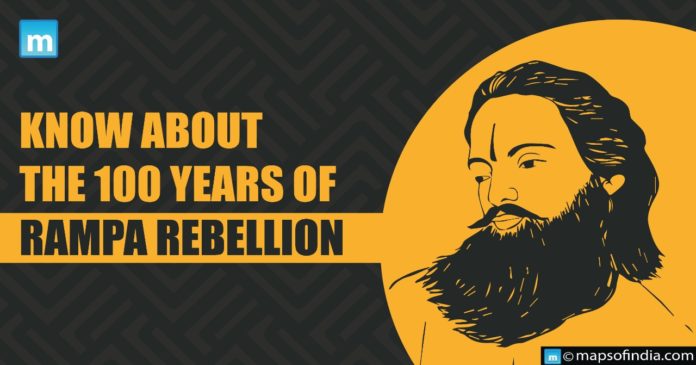The Rampa Revolt, also referred to as the Manyam Uprising, was a tribal insurgency led by Alluri Sitarama Raju in Madras Presidency a century ago. It began in August 1922 and lasted until Raju got arrested and murdered in May 1924.
Background of the revolt
The Rampa administrative jurisdiction was located in the hills of what is now the Godavari division of the Indian state of Andhra Pradesh and had a primarily tribal population of around 28,000. Previously, they had been able to fulfil their food demands through the slash and burn system, in which some rainforest areas were burned each year to make way for farming.
Factors leading to the revolt
- The British Raj aimed to increase the economic utility of lands in the Godavari Agency, an area known for its abundance of malaria and blackwater sickness.
- Traditional agricultural practises were considerably hampered when the state acquired control of the forests, mainly for commercial objectives such as products for constructing railways and ships, with no consideration for indigenous people’s necessities.
- A government paper from 1923 said that “the nation had suffered from unduly strong limitations on jungle clearing, that numerous constraints had been overdone, and significant populace and food grains had been wasted for the sake of woods of uncertain worth”.
Building of discontent
- The tribal inhabitants of the hills, who were facing starvation, had long believed that the judicial framework preferred the zamindars (estate landlords) and traders of the plains districts, which had led to the preceding Rampa Rebellion of 1879.
- They are now opposed to Raj regulations and ongoing acts that harmed their economic situation and forced them to seek alternate subsistence methods, like working as coolies. They specifically resisted attempts at the time to utilise them as indentured servants in developing a regional road.
- Concurrently, there was resentment among the Muttadars, who were hereditary tax collectors and the real authorities in the highlands until the British arrived. They had previously taken the role of the rajas, the true rulers of the plains. They had almost unrestricted authority until the British incorporated them into the colonial government, placing them as mere bureaucrats with little substantial power and no absolute entitlement to an inherited post.
Sitaraman Raju’s role
- Raju was a popular sannyasin who many tribal people thought possessed magical talents and had virtually messianic status.
- He used tribal resentment to fuel his anti-colonial fervour, while also catering to the problems of those Muttadars who were committed to his cause rather than just narrow-minded in their desire for a renewed position for themselves.
- Sitarama Raju did not belong to the tribal group, but he was aware of the constraints imposed on tribal life by British colonial rule.
Method of revolt
- Alluri Sitarama Raju and 500 tribals raided the Chintapalli, Krishnadevipeta, and Rajavommangi police stations.
- They carried 26 police carbine guns and 2000 rounds of ammo with them.
- According to folklore, Alluri would warn British commanders of an impending invasion and dare them to prevent him with the more significant resources at their disposal.
- He was eventually apprehended, chained to a tree, and gunned down.




